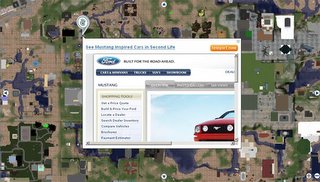
Although Grand Theft Auto: San Andreas does not feature any brands or advertising for real world products (they do pay tribute to a few commercial locations), the highly detailed and "intergrated" campaigns for fictional brands are a source of insights in how to market real products in games. One such brand is the soft drink Sprunk, which is most likely an apparent parody (tribute?) of Coca-Cola's Sprite (see the packshot below).
Advertising fictional brands could also be a "guerilla" tactic by companies who don't want to be too closely associated with controversial games such as GTA and yet want to capitalize on the large audiences some of these games enjoy. I would also love to see Sprunk in the real-life stores.
Here's how the fictional marketers of Sprunk advertise it in the San Andreas universe. It should be noted that, in the game, Sprunk functions mostly as a decoration and is not an active object one can acquire or use.
1. Radio commercials played on the car stereo. Download MP3 file (1.08Mb, :47) or read the spot's script (source) below:
Man: There’s a war going on in the streets
(sound of police sirens)
Man: It’s the war on thirst!
(sound of explosion)
Man: Sprunk is winning the war on thirst with the new grenade-shaped can.
Man 2: Eh yo, pull the pin and blow your thirst right off in that brand-new
taste explosion!
(sound of larger explosion)
Man: Now that’s the sound of freshness! Sprunk! Go AWOL from the cola wars with an energizing mix of lemon, lime, and ten times the caffeine and sugar.
Man 2: Plus mercury and benzene for that extra pop!
Man: Yo, it’ll bring you temperature right up! And the bubbles! Other beverages use carbon dioxide. Pssh! We use ether to kick up that fizz!
Thanks to all that mercury, you won’t remember -anything- that tasted so good. Now pick up a Sprunk thermonuclear six-pack, kill thirst and liven up the party! Toss your friends a Sprunk in the grenade-shaped can and enter the Sprunk sweepstakes, where you can win a real case of grenades! Sprunk! Blow your thirst right off in that brand-new taste explosion!
(sound of explosion)


2. Billboards placed throughout the game.


3. Vending machines, both outdoor and in-store.

4. In-game pubs.

5. On the shelves of in-game stores (6 faces, first and second shelves from the top).


6. Sprunk must either own or have an agreement with the major fast food chains in San Andreas since it's an exclusive drink both in Clunking Bell and Burger Shot.







































